Location
641 to 672 of 942 results
-
BOWT Watersport
BOWT Watersport Burgum
Burgum -
Camperpark Kuikhorne
Camperpark Kuikhorne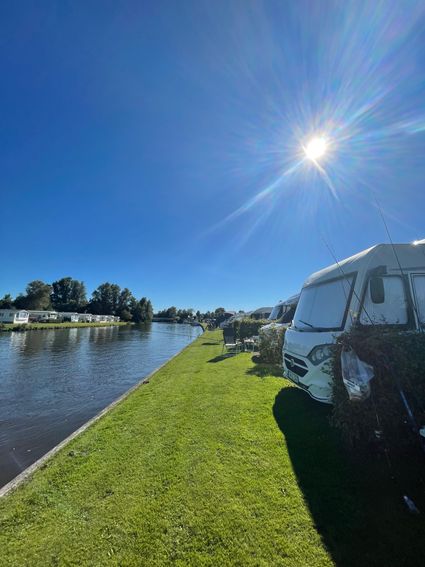 De Westereen
De Westereen -
Huis met de twintig kamertjes
Huis met de twintig kamertjes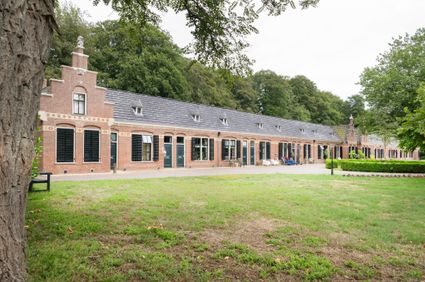 Tytsjerk
Tytsjerk -
Headmaster Jakob Klok in the resistance
Headmaster Jakob Klok in the resistance
During the war, Jakob (Jaap) Klok ended up in the resistance in Dantumadeel, where he played an important role. At the time, he lived with his wife and four children in Akkerwoude, where he was headmaster of the school at Hearewei 13. He stayed there until 1947 and will always be remembered as "Headmaster Klok."
Jaap Klok was active socially and in politics as a member of the Dutch Social Democratic Labour Party (SDAP). When party meetings were banned by the German occupiers, Jaap imperceptibly became ever more involved in resistance activities. He passed on party information, distributed illegal newspapers, and looked for addresses for people in hiding. Jaap Klok joined the LO, the National Organisation for Aid to people in Hiding, and became the Akkerwoude village commander.
Although people did not know exactly what he did, it was known that he was in the resistance. Despite the fact that his name circulated among NSB members, he decided not to go into hiding, but instead tried to be even more careful and to sleep at home more often than not.
As the war drew to a close, Jaap became very busy. The Dutch government in exile was calling on railway workers to go on strike. The resistance arranged for the hiding. On 15 December 1944, a group of about sixty refugees from Arnhem arrived at his school. Jaap was indirectly involved in the evacuation committee, which was looking for addresses for the unfortunate Arnhem residents.
Shortly thereafter, he was warned at the schoolhouse that during a raid in Murmerwoude, explicit questions were asked about schoolmaster Klok. Jaap did not hesitate a second and quickly left the house. And not a moment too soon, as ten minutes after his departure the Germans were already on his doorstep. From that moment on, Jaap knew that he had to be very careful. He hardly ever slept at home anymore.
From January 1945 onwards, the situation became explosive. After the discovery of weapons on a farm in Aalsum, the Germans became fanatical. They relentlessly hunted down resistance fighters and used any means to make those who were caught talk. The name "Jaap Klok" was also mentioned during these interrogations. Sufficient reason to leave then and there, with his whole family. The children stayed with relatives. He and his wife went into hiding elsewhere.
During the last weeks of the war, Jaap was very busy. Much had to be organised and discussed within the resistance to expel the Germans and prepare for the arrival of the Canadians. Just before Dantumadeel was liberated, the inhabitants were already beside themselves with joy. They raised the flag and took to the streets en masse to celebrate. Because of his resistance work, Jaap knew exactly what the situation was with regard to the liberation. He climbed onto the balcony of the town hall and addressed the people. After all, the danger had not yet passed. Even when that was the case shortly thereafter, he ensured that peace was maintained among the population of Dantumadeel and thus prevented the molestation of a number of NSB members.
After the war, he held many administrative positions in the province of Friesland. In 1984, Jaap Klok died at the age of 91. Fifteen years later, a statue of him was erected in Akkerwoude, which was then called Damwoude, as a tribute.
From the book "De oorlog een gezicht geven" (deel 6) – Dantumadeel in de periode '40 - '45 by Yvonne te Nijenhuis and Reinder H. Postma
 Damwald
Damwald -
Elfstedentocht Turning Point
Elfstedentocht Turning Point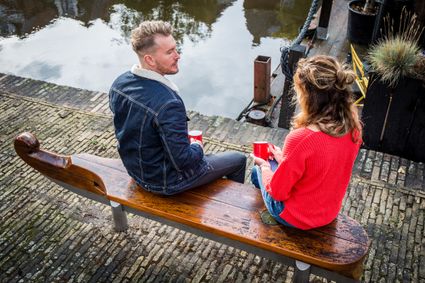 Dokkum
Dokkum -
Hotel Restaurant Wad Oars
Hotel Restaurant Wad Oars Anjum
Anjum -
De Forelpoel
De Forelpoel Kollumerzwaag
Kollumerzwaag -
De Kruisweg
De Kruisweg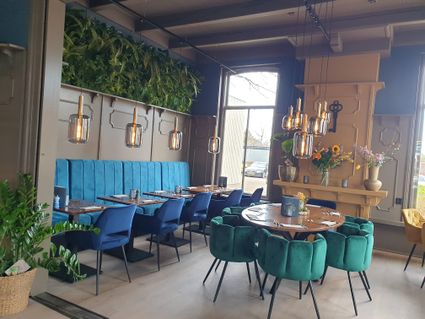 Damwâld
Damwâld -
Marboei MB6
Marboei MB6 Sitebuorster Ie
Sitebuorster Ie -
Zonnepark Garyp
Zonnepark Garyp Garyp
Garyp -
Aanlegsteiger LM33A
Aanlegsteiger LM33A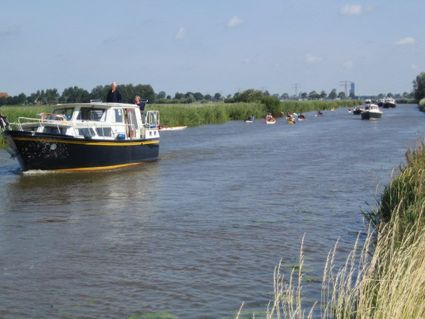 Driezum
Driezum -
Toutenburger bos
Toutenburger bos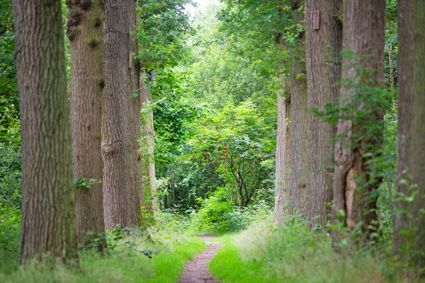 Noardburgum
Noardburgum -
Twijzelermieden - Ald Dyk- vogelkijkhut
Twijzelermieden - Ald Dyk- vogelkijkhut Kootstertille
Kootstertille -
Hervormde Kerk Oudwoude
Hervormde Kerk Oudwoude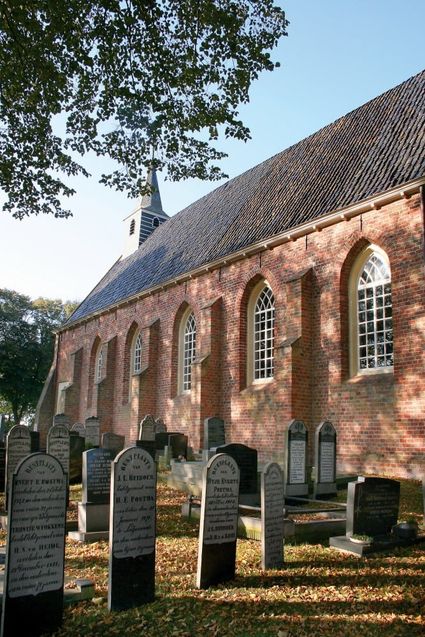 Oudwoude
Oudwoude -
Kerkje van Hiaure
Kerkje van Hiaure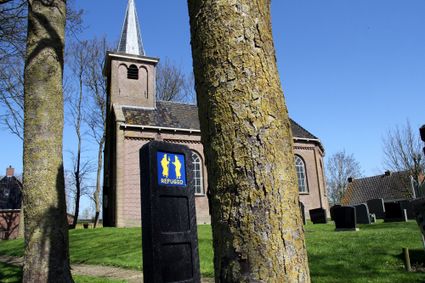 Hiaure
Hiaure -
www.countrygarden.nl
www.countrygarden.nl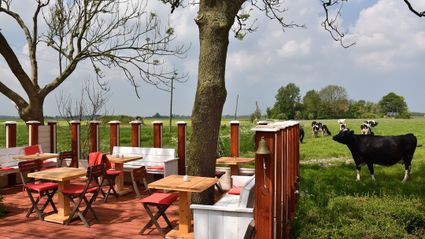 Ie
Ie -
Heidegebied Sumar
Heidegebied Sumar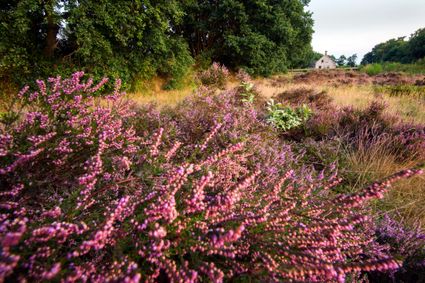 Sumar
Sumar -
Voormalig klooster Weerd
Voormalig klooster Weerd Morra
Morra -
Verhalenkamer van Stichting Dam Jaarsma
Verhalenkamer van Stichting Dam Jaarsma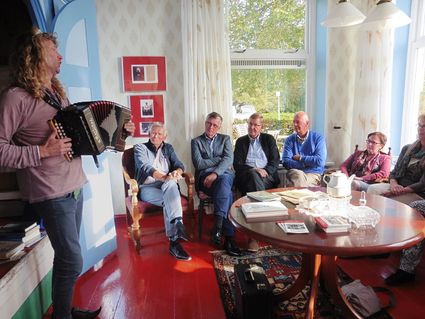 Eastermar
Eastermar -
Boer & Breakfast Klein Berkensteijn
Boer & Breakfast Klein Berkensteijn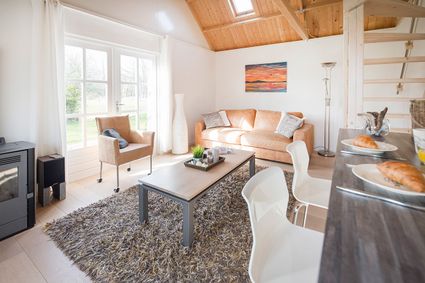 Kootstertille
Kootstertille -
it Dreamlân nature campsite
it Dreamlân nature campsite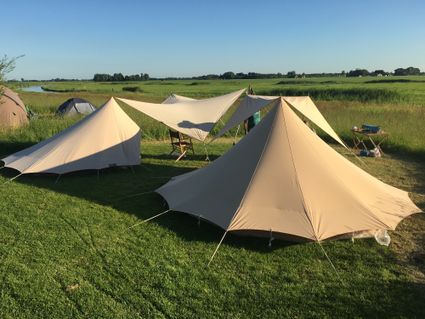 Kollumerpomp
Kollumerpomp -
Oostermeer (Eastermar)
Oostermeer (Eastermar)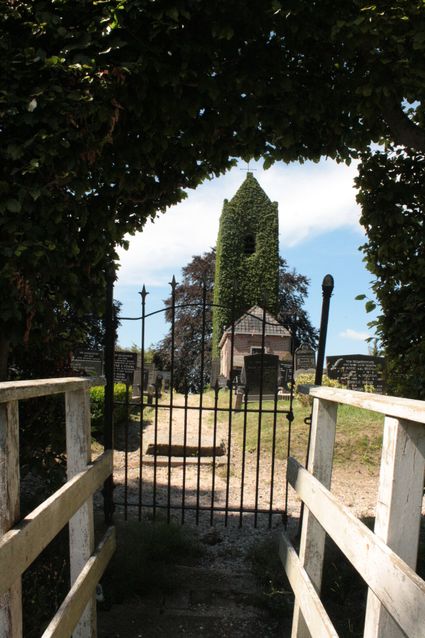 Eastermar
Eastermar -
De Leijen - De Tike - Uitkijkhut
De Leijen - De Tike - Uitkijkhut Sumar
Sumar -
Alde Feanen - Earnesleat - Vogelkijkhut
Alde Feanen - Earnesleat - Vogelkijkhut Earnewâld
Earnewâld -
The liberation of Leeuwarden
The liberation of Leeuwarden
On 11 April 1945, it became clear that German resistance in the north of the Netherlands was limited. On 12 April, the Allies seized this opportunity to advance on Friesland as quickly as possible. One of the main goals was to liberate Leeuwarden. The 9th Canadian Infantry Brigade was designated for this purpose. But things would turn out differently.
On 12 April, the Royal Canadian Dragoons entered Friesland at Noordwolde. They were to conduct reconnaissance with their armoured vehicles and reach the Wadden Sea as quickly as possible. As a result, the German troops in Friesland and Groningen would be separated.
On the night of 14 to 15 April, three Squadrons of the Dragoons were at Suameer. Burgum could not be reached earlier that day, because the bridge at Burgummerdam had been blown up by the Germans.
Meanwhile, all sorts of things were happening in nearby Leeuwarden. On 12 April, the airfield had been blown up by the Germans. And they left the city on 14 April. Leeuwarden would not be defended. The Burgerweeshuis (Civil Orphanage) that had housed several German agencies was set on fire. An attempt to blow up the telephone exchange failed due to an ingenious intervention by the resistance. In the early morning of 15 April, the resistance also took to the streets en masse to occupy important points and to capture Germans who had remained behind.
The Dragoons in Suameer were in contact with the resistance in Leeuwarden. Due to various reports, it was unclear whether there was now heavy fighting in Leeuwarden or whether the Germans had left the city completely. Because the Germans had blown up important bridges on the route from Heerenveen to Leeuwarden, the infantry could not quickly provide assistance.
So, the Dragoons went to take a look for themselves. Initially, a patrol of four vehicles was sent via the Groningerstraatweg into the city around half past eleven. One of the Canadians in those vehicles recorded the following:
"As we entered the city, passing through the concrete barrier by the narrow passageway left for normal traffic, we were met by an almost hysterical patrol of Resistance men [...] In a few moments the news of our arrival had spread through the city, and we were given a fantastic welcome as we rolled slowly forward into the centre of town."A resident of Leeuwarden recalled:
"We lived close to the Groningerstraatweg, where our liberators passed. Many hundreds of us stood there, all happy spectators. All of a sudden, two ladies from the row flung themselves forward and threw their arms around the Canadians' necks, saying: "Oh darlings, you’re here at last!"After the patrol determined that the coast was clear, the entire C Squadron, a detachment of the Royal Canadian Engineers and Regimental Headquarters of Lieutenant-Colonel Landell followed. Leeuwarden had been liberated. After this, thousands took to the streets. One of the Canadians wrote:
"We halted, and were immediately surrounded by laughing, yelling mobs of people, bringing flowers to give to us, and cheering every move. The Resistance men were everywhere, doing their best to keep the people within bounds and off the cars, but their efforts were hardly necessary. I never saw a more satisfying gathering in my life."Leeuwarden had been liberated by the Dragoons through unexpected circumstances. On the night of 15 to 16 April, Canadian infantry moved into the city.
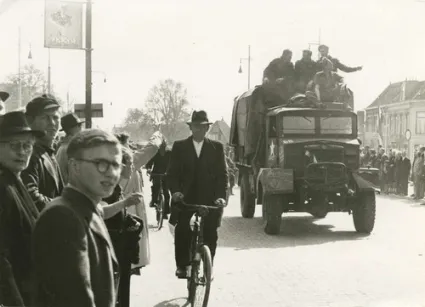 Leeuwarden
Leeuwarden -
Sint Annaparochie (Sint Anne)
Sint Annaparochie (Sint Anne)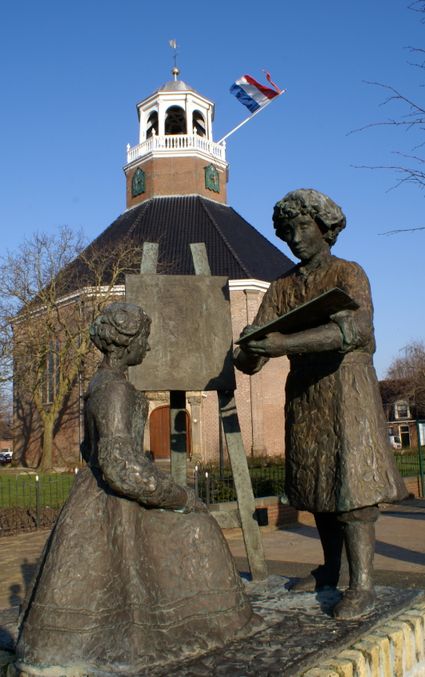 Sint Annaparochie
Sint Annaparochie -
Fietsverhuur Hollema
Fietsverhuur Hollema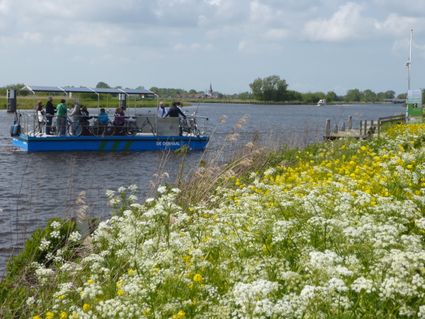 Earnewâld
Earnewâld -
Bootverhuur Hollema
Bootverhuur Hollema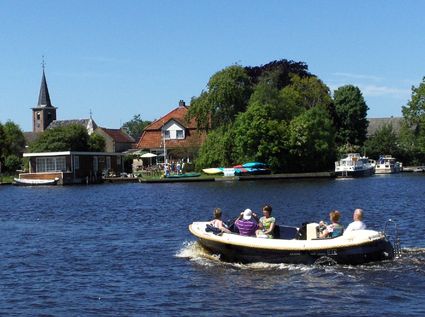 Earnewâld
Earnewâld -
Burgum - Soestpolder - Hege Diken - Vogelkijkhut
Burgum - Soestpolder - Hege Diken - Vogelkijkhut Burgum
Burgum -
Sloep, toerboot en sup verhuur Dokkum
Sloep, toerboot en sup verhuur Dokkum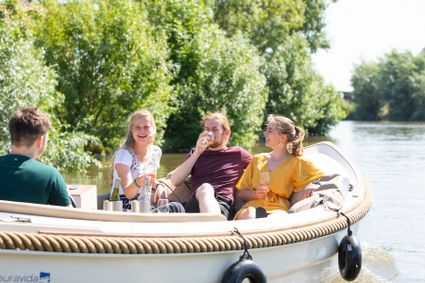 Oostrum/Dokkum
Oostrum/Dokkum -
Kerk van Engwierum
Kerk van Engwierum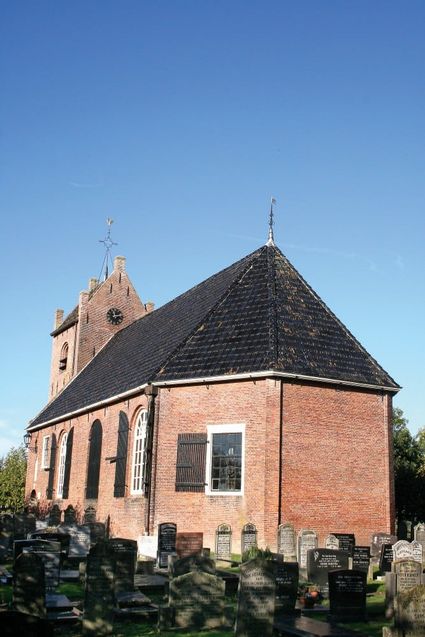 Engwierum
Engwierum -
Sneekermeer - Grutte Potten - Kijkheuvel met scherm
Sneekermeer - Grutte Potten - Kijkheuvel met scherm Offingawier
Offingawier


